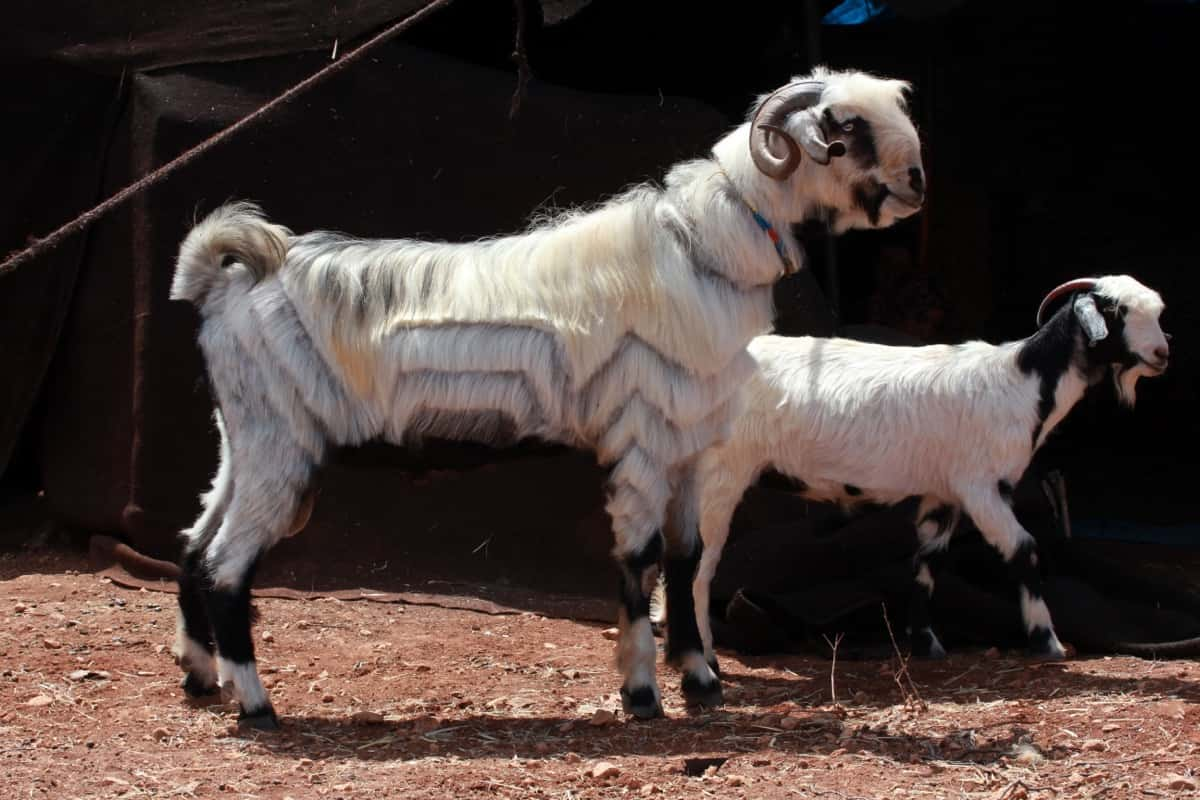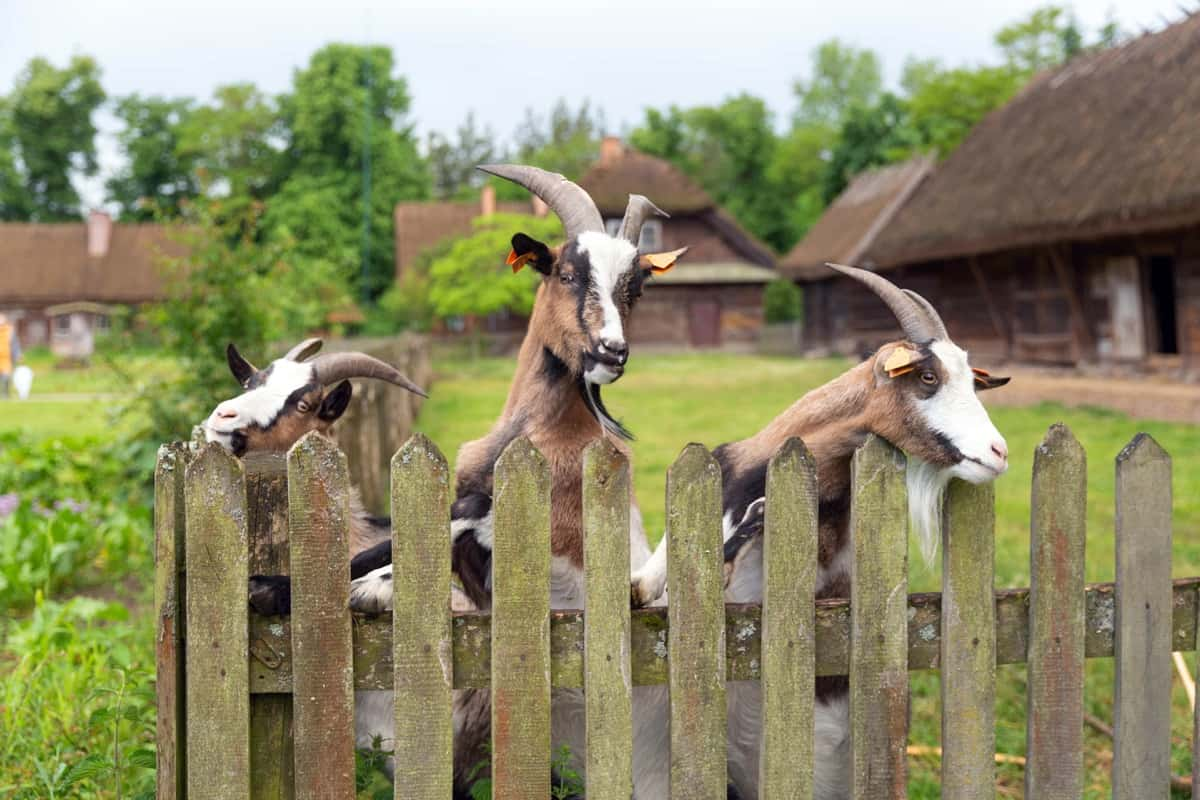Dermatophilosis, also referred to as cutaneous streptothricosis, strawberry foot rot, or chunky wool, is a chronic, exudative, and occasionally proliferative skin disease that affects domestic ruminants, wild animals, and occasionally humans. The disease is caused by the bacterium Dermatophilus congolensis, commonly found in soil, water, and animal skin. Crusty scabs and pustules characterize Dermatophilosis and lesions on the skin, particularly in areas of the body with high moisture content, such as the legs, neck, and head.

Dermatophilosis Management in Goats
Causes of Dermatophilosis Disease
Dermatophilosis is caused by the Dermatophilus congolensis (Bacteria), a gram-positive, nonacid-fast, facultative anaerobic actinomycete. This bacterium is common in soil, water, and animal skin and can infect many domestic and wild animals and humans.
Occurrence of Dermatophilosis Disease
Dermatophilosis is a worldwide disease that occurs in both domestic and wild animals and occasionally in humans. The disease is more common in tropical and subtropical regions. High humidity and wet conditions provide an ideal environment for the growth and spread of the causative bacterium, Dermatophilus congolensis.
The bacterium is believed to be a saprophyte of soil, meaning it lives off dead organic matter. It can persist in dry scabs and crusts for up to 42 months, making it difficult to eradicate from contaminated environments. Dermatophilus congolensis has been reported from many countries but occurs particularly in humid climates and areas where ticks of the genus Amblyomma are endemic.
Other factors that can contribute to the development of dermatophilosis include poor animal husbandries practices, such as overcrowding and poor hygiene, as well as environmental factors, such as high humidity and wet conditions. These factors can create an environment conducive to the growth and spread of Dermatophilus congolensis, increasing the risk of infection in animals.
Disease Cycle of dermatophilosis in Goat
The disease cycle of dermatophytosis in goats begins with exposure to the causative bacterium, Dermatophilus congolensis, which can occur through direct contact with infected animals and indirectly through mechanical vectors such as ticks and other ectoparasites. The infection can also be transmitted through intradermal inoculation by contaminated thorny bushes or other sharp objects.
Once the bacteria have entered the goat’s skin, they multiply and spread, leading to the characteristic lesions, scabs, and crusts associated with dermatophilosis. The pathogenesis of the disease may be influenced by various factors, including mechanical injury to the skin, rainfall, tick infestation, concurrent diseases, and stresses that compromise the host’s immune system.
As the infection progresses, the scabs and crusts may become more widespread, covering larger areas of the skin and leading to hair loss, itching, and discomfort for the goat. In severe cases, the disease can lead to weight loss, reduced milk production, and other systemic effects that can impact the health and productivity of the animal.
In case you missed it: Enterotoxemia Management in Goats: Disease Symptoms, Treatment, Diagnosis, and Prevention

Symptoms of Dermatophilosis Disease in Goat
- Dermatophilosis is a painful but non-pruritic disease that affects goats, characterized by exudative, proliferative, or hyperkeratotic dermatitis, accompanied by the production of crusts and folliculitis.
- In goats, the disease is often referred to as cutaneous streptothricosis and presents with similar signs of crusty, suppurative dermatitis as in cattle.
- The skin lesions appear raised, thick, and yellow-brown colored discrete or confluent crusts containing matted hair. Nodular forms with discrete encrustation of scabs may also be seen.
- The whole body may be affected, but less hairy parts such as ears, axilla, scrotum, prepuce, ventral abdomen, and limbs show severe lesions.
- Lesions in younger goats are mostly seen along the tips of the ears and under the tail. Animal movement and eating become difficult if there are lesions at the feet, lips, and muzzle.
Diagnosis of Dermatophilosis Disease in Goat
- Diagnosing dermatophilosis in goats is primarily based on clinical signs, particularly the appearance of characteristic skin lesions.
- The presence of crusts and folliculitis, along with the location of the lesions in less hairy areas, can help to differentiate dermatophilosis from other skin diseases.
- The diagnosis can be confirmed by demonstrating the organism from the lesions beneath the scabs. Softened scab materials stained with the Giemsa method reveal the characteristic branching filaments containing zoospores.
- The organism can also be cultured on blood agar at 37°C under 2.5-10% CO2 for up to 5 days. Additionally, the Haalstra technique based on chemotaxis of the zoospores to CO2 can recover the organism efficiently.
Treatment and Control of Dermatophilosis Disease
The treatment and control of dermatophilosis in goats involve a combination of antibiotic therapy and topical treatment, as well as management practices to reduce the spread of the disease. Antibiotic therapy with high doses of penicillin or long-acting tetracyclines effectively treats dermatophilosis. However, topical applications alone are ineffective. Lime sulfur is commonly used as a topical treatment and effectively clears the disease. Additionally, povidone iodine shampoos or chlorhexidine solutions can also be used to help clear the lesions.
Control of ectoparasites and biting flies is also important in managing dermatophilosis. Regular use of insecticides, particularly those targeting ticks, can reduce the spread of the disease. Proper hygiene practices, such as keeping the animals clean and dry, can also help prevent the disease’s spread.
Preventive Measures of Dermatophilosis Disease in Goats
- Preventive measures for dermatophilosis in goats include a combination of management practices to reduce the spread of the disease and prophylactic antibiotic therapy.
- Minimizing the effects of predisposing factors is key to preventing the disease. This includes prompt treatment of affected goats and isolation of animals with skin lesions. Providing shelter during rainfall to minimize moist conditions is also helpful in control and prevention. Grazing management, such as removing thorny bushes in pasture land that can damage skin, can also help prevent the spread of the disease.
- Prophylactic antibiotic therapy can also be given to prevent the occurrence of dermatophilosis.
In case you missed it: Caseous Lymphadenitis Management in Goats: Disease Symptoms, Treatment, Diagnosis, and Prevention

Conclusion
Dermatophilosis is a chronic and sometimes proliferative skin disease affecting domestic ruminants, wild animals, and humans. It is characterized by exudative, proliferative, or hyperkeratotic dermatitis accompanied by the production of crusts and folliculitis. Treatment includes antibiotics and topical applications, while prevention measures involve minimizing predisposing factors and practicing good hygiene. Early detection and prompt treatment of affected animals are crucial for controlling and preventing the spread of the disease.
- Beneficial Insects in Pest Management
- Natural Solutions for Pest Control in Flower Gardens
- Types of Fungicides Used in Agriculture
- Common Issues in the Fruit Development Stage of Pomegranate Farming
- Fruit Development Issues in Papaya: Easy Solutions and Treatment
- Soil-Borne Diseases and How to Protect Your Plants
- Practices to Prevent Disease Spread in the Garden
- From Wilted to Thriving: How to Treat Root Rot Naturally in Houseplants
- Natural Remedies to Cure Brown Spots on Fig Tree Leaves